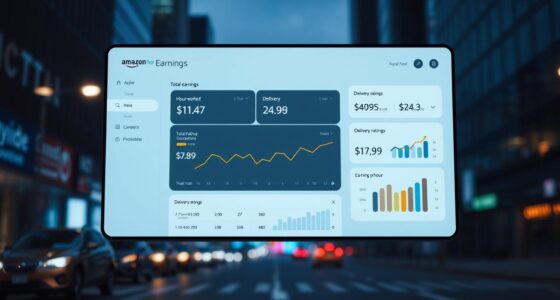To understand Amazon's pricing and discount strategy, you should know it heavily relies on dynamic pricing. This means prices change in real-time based on competition, demand, and inventory. You'll find strategies like Lightning Deals and BOGO promotions that create urgency and boost sales. Third-party sellers often use automated tools to adjust prices and secure the Buy Box, enhancing their competitiveness. Stick around to explore how to maximize your own sales on Amazon.
Key Takeaways
- Amazon employs dynamic pricing algorithms that adjust prices in real-time based on competitor pricing, demand, and inventory levels.
- Seasonal trends and customer browsing habits significantly influence product pricing, causing fluctuations throughout the year.
- Third-party sellers can utilize automated pricing tools to optimize their pricing strategies and compete for the Buy Box effectively.
- Promotional techniques like Lightning Deals and BOGO offers create urgency and enhance sales by encouraging customer purchases.
- Algorithmic pricing and machine learning allow for frequent price adjustments, improving competitiveness and fostering customer loyalty through perceived value.
Dynamic Pricing Mechanism

As you explore Amazon's pricing strategy, you'll find that its dynamic pricing mechanism plays a crucial role in shaping the shopping experience. This system adjusts prices in real time, utilizing sophisticated algorithms that analyze competitor prices, customer demand, and stock levels.
With around 2.5 million price changes daily, adjustments happen approximately every 10 minutes, ensuring you get competitive offers. Sellers benefit from automated pricing rules, which help them compete for the coveted Buy Box by matching or beating prices.
Additionally, third-party tools offer advanced strategies for pricing, while manual adjustments can be made for special promotions. Ultimately, this dynamic approach enhances revenue and customer retention while keeping Amazon ahead in a competitive market.
Key Factors Influencing Amazon's Pricing
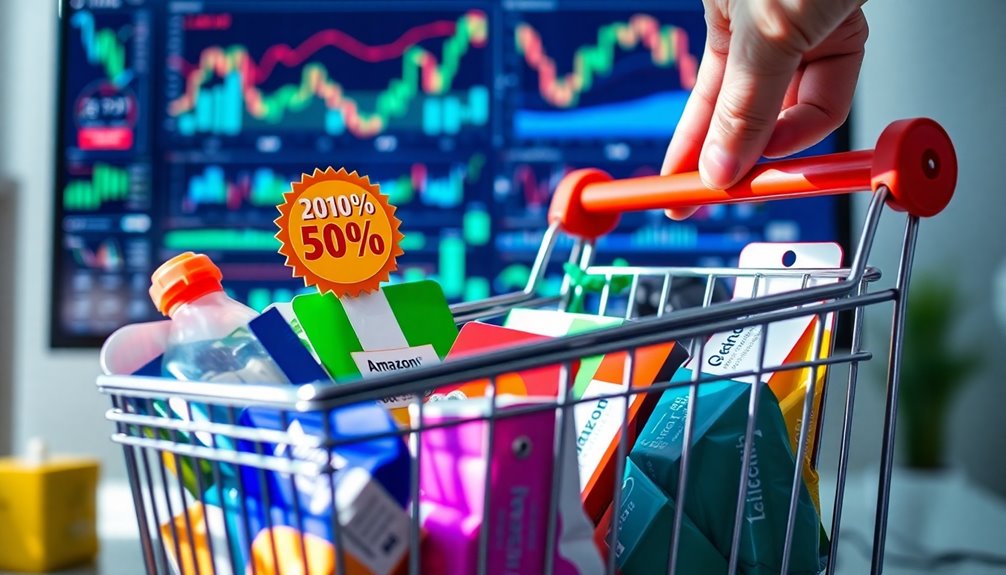
Several key factors influence Amazon's pricing strategy, ensuring it remains competitive and responsive to market dynamics.
Market competition plays a huge role, as prices of similar products directly affect what you see.
Supply and demand also impact pricing; when demand is high and supply low, expect higher prices.
Costs related to production, storage, and shipping help determine profit margins, adjusting prices accordingly.
Seasonal trends can lead to price changes based on specific demands throughout the year.
Your browsing habits and the time of day can cause fluctuations too, as Amazon adapts to when products are most sought after.
All these elements work together to create a pricing environment that aims to meet your needs while staying profitable.
Pricing Strategies for Third-Party Sellers
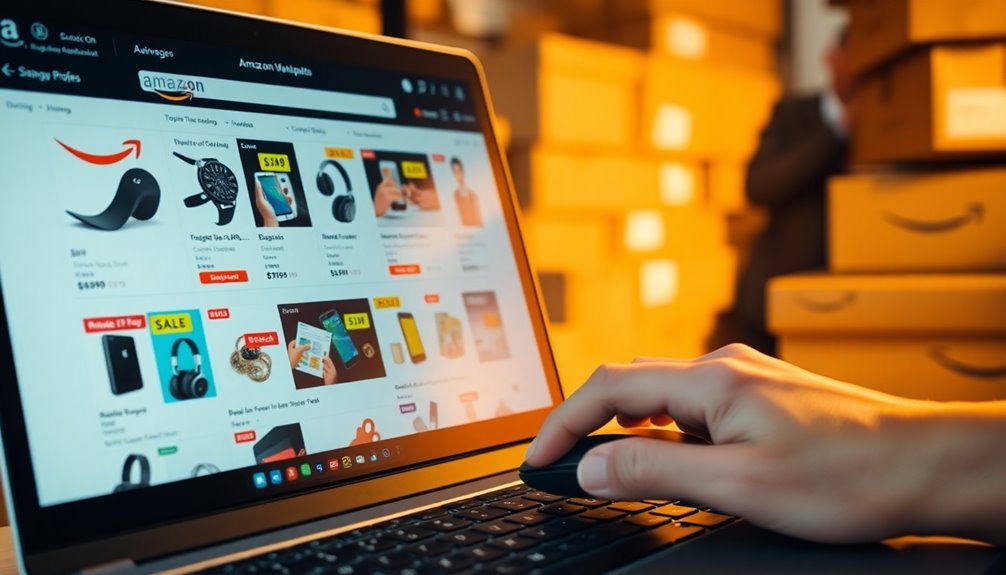
Understanding pricing strategies is crucial for third-party sellers on Amazon, especially since their success often hinges on competitive positioning in a crowded marketplace.
You can leverage dynamic pricing to adjust your prices based on demand and competitor pricing, ensuring you stay relevant. Automated pricing tools help you optimize for the Buy Box, while customized pricing rules allow you to set targets based on your goals.
Manual adjustments can be useful for specific promotions, though they require more effort. Additionally, consider value-based pricing by assessing customer perceptions and brand reputation.
Employ competitive strategies like low pricing or penetration pricing to attract customers, and always analyze competitor pricing to maintain your edge in the market.
Discount and Promotion Techniques
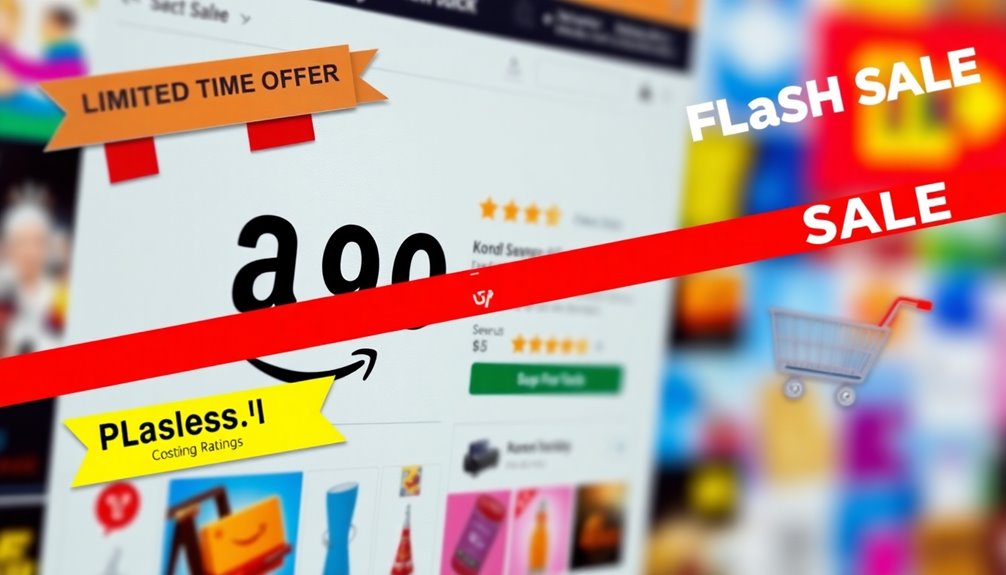
When you're managing pricing for your products on Amazon, incorporating effective discount and promotion techniques can significantly enhance your sales strategy.
Lightning Deals create urgency with limited-time offers, driving quick sales. BOGO promotions boost average order value by providing an extra product at a discount.
Amazon Coupons attract attention by appearing in search results, while Prime Exclusive Discounts target loyal customers.
Percentage Off Discounts are straightforward and easily highlighted on your product pages.
To maximize effectiveness, use these promotions during peak sales periods and monitor their performance with Amazon's analytics tools.
Seasonal Pricing Adjustments
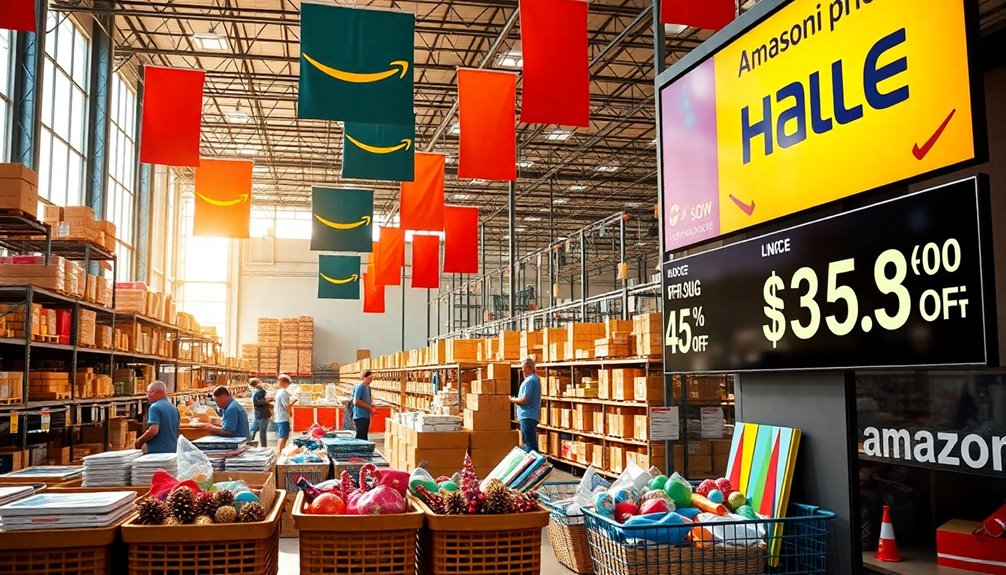
As seasonal demand fluctuates throughout the year, adjusting your pricing strategy can help you maximize sales and profits on Amazon.
Focus on dynamic pricing for seasonal products like holiday decorations or gardening items, adjusting prices in real-time based on demand and competition.
Use tools like Google Trends and Keepa to analyze trends and manage your inventory effectively.
Be ready to restock before peak seasons to meet early demand without overstocking.
Consider scarcity pricing when inventory runs low, and don't hesitate to offer bundles or discounts to encourage larger purchases.
Finally, tapping into Amazon's global marketplace can extend your product's lifespan by selling in regions with opposite seasons, boosting your overall profitability.
Algorithmic Pricing and Machine Learning

Algorithmic pricing, powered by machine learning, revolutionizes how Amazon responds to market dynamics and consumer behavior.
This system allows Amazon to adjust product prices multiple times a day, using real-time data to predict demand, supply, and competitor pricing. By continuously gathering data on competitor prices and demand trends, the algorithm can change prices as often as every 10 minutes.
It considers factors like inventory levels and customer purchasing preferences to maximize profit margins. This dynamic pricing strategy enhances competitiveness by ensuring you always get the best possible prices.
Additionally, it helps with inventory management, capitalizing on peak demand periods, and fostering customer loyalty through perceived value.
Impact of Pricing on Sellers and Consumers

Pricing on Amazon significantly impacts both sellers and consumers, shaping their experiences in the marketplace. For sellers, staying competitive is crucial; they must constantly adjust prices to win the Buy Box and maximize visibility.
You'll find that dynamic pricing requires vigilance, as prices may change multiple times a day. Meanwhile, you benefit as a consumer from tools that compare prices, ensuring you get the best deals.
Amazon's pricing strategies, like loss leader pricing and psychological pricing, enhance your shopping experience by making products appear more appealing. Plus, subscription services like Prime provide extra perks, fostering loyalty and increasing your overall spending.
In this dynamic environment, pricing plays a pivotal role in determining satisfaction for both parties.
Strategies for Maximizing Sales on Amazon

Maximizing sales on Amazon requires a strategic approach that combines several key tactics.
Start by optimizing your product listings: craft concise titles with brand names and benefits, use high-quality images, and create engaging bullet-point descriptions. Incorporate relevant keywords to boost visibility in search results.
Leverage advertising options like Sponsored Product Ads and Headline Search Ads to increase brand awareness.
Don't overlook the power of reviews; encourage customers to leave feedback and respond to their comments to foster trust.
Utilize promotions like Lightning Deals and coupons to attract price-sensitive shoppers while balancing competitive pricing with profitability.
Frequently Asked Questions
How Does Amazon Determine Which Products to Discount?
Amazon determines which products to discount by assessing various criteria.
You'll notice that products need to be fulfilled by Amazon and have at least a 3-star rating. Discounts must be at least 10% off for non-Prime members but can't exceed 80%.
You identify products using ASINs or SKUs, and create selections in Seller Central.
The eligibility validation process ensures the products meet Amazon's standards before any discounts are applied.
Can Sellers Influence Amazon's Pricing Algorithms Directly?
Over 500 sellers on Amazon use algorithmic pricing strategies, showcasing its prevalence.
While you can't directly influence Amazon's pricing algorithms, your actions can have an indirect impact. By adjusting your prices competitively and maintaining high ratings, you can increase your chances of winning the Buy Box.
This, in turn, can lead to higher sales volumes, as the algorithm favors sellers who align with its dynamic pricing model.
Are There Fees Associated With Using Dynamic Pricing Tools?
Yes, there are fees associated with using dynamic pricing tools.
While Amazon's Automate Pricing tool is free for Professional Sellers, third-party tools often come with subscription fees.
Additionally, consider the indirect costs, like potential profit margin losses due to price adjustments.
Time spent managing these pricing strategies can also be an opportunity cost.
It's crucial to weigh these factors when deciding on a dynamic pricing approach for your business.
How Often Do Customers See Price Changes on Their Favorite Items?
Imagine walking into a store where prices shift with every step you take.
On Amazon, you might see price changes on your favorite items multiple times a day, sometimes even every couple of minutes. This frequent fluctuation happens because of demand, competitor pricing, and seasonal trends.
As a result, it can be tough to decide when to buy, keeping you on your toes and encouraging you to monitor prices closely.
What Role Do Customer Reviews Play in Pricing Decisions?
Customer reviews play a crucial role in pricing decisions by influencing perceived value and trust.
When you see a product with positive reviews, you're more likely to believe it's worth a higher price. Sellers analyze these reviews to adjust their pricing strategies, ensuring competitiveness.
If a product garners high ratings, it can command premium pricing. Your feedback also helps sellers gauge customer preferences, allowing them to adapt prices based on your insights and market trends.
Conclusion
In the ever-shifting landscape of Amazon's pricing strategies, you wield the power to navigate like a skilled sailor in turbulent waters. Embrace dynamic pricing and stay attuned to seasonal changes, and you'll find yourself riding the waves of profit. Remember, each discount and promotion is a beacon, guiding consumers to your products. By understanding these strategies, you can transform your selling experience into a thriving venture, turning potential storms into smooth sailing toward success.





